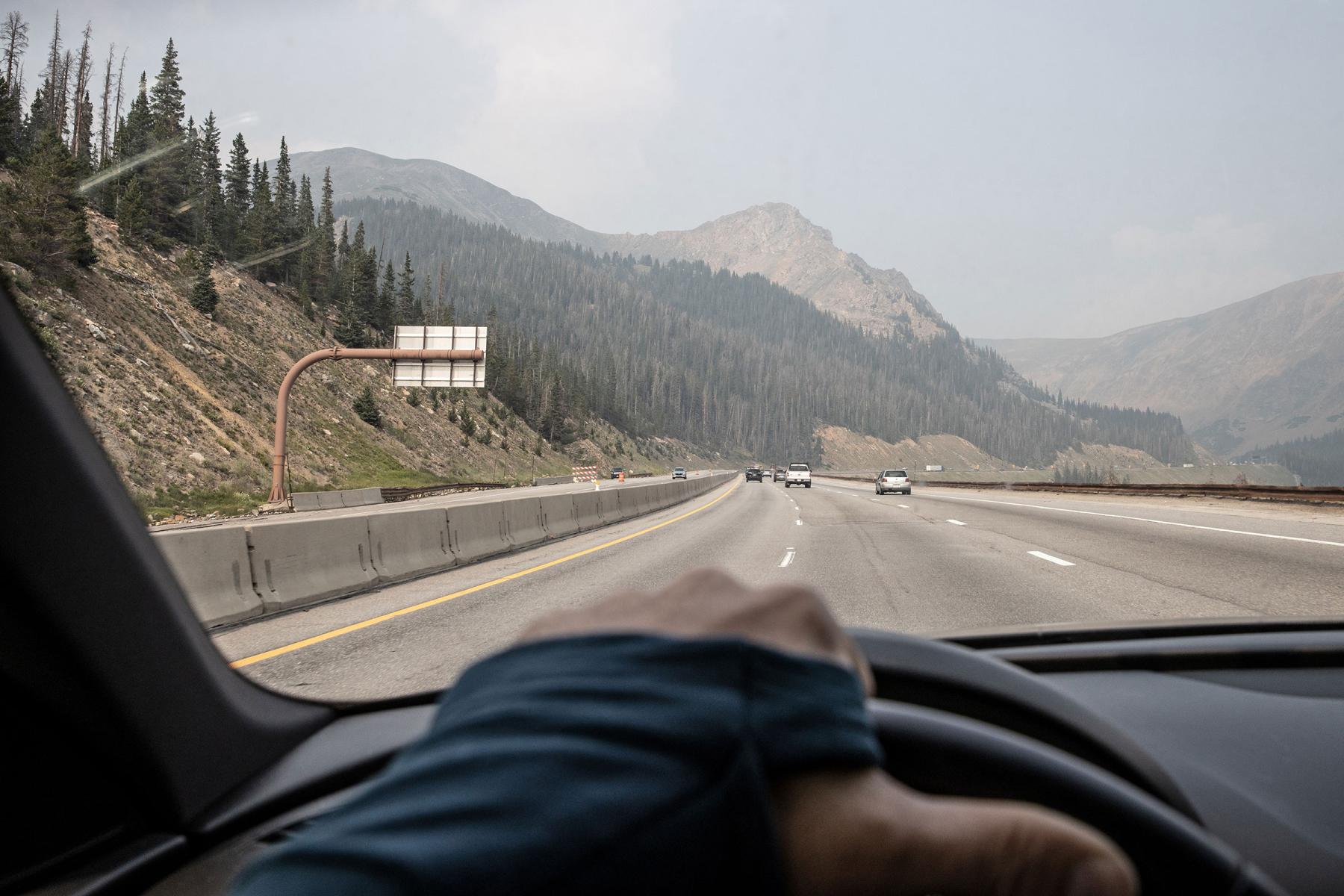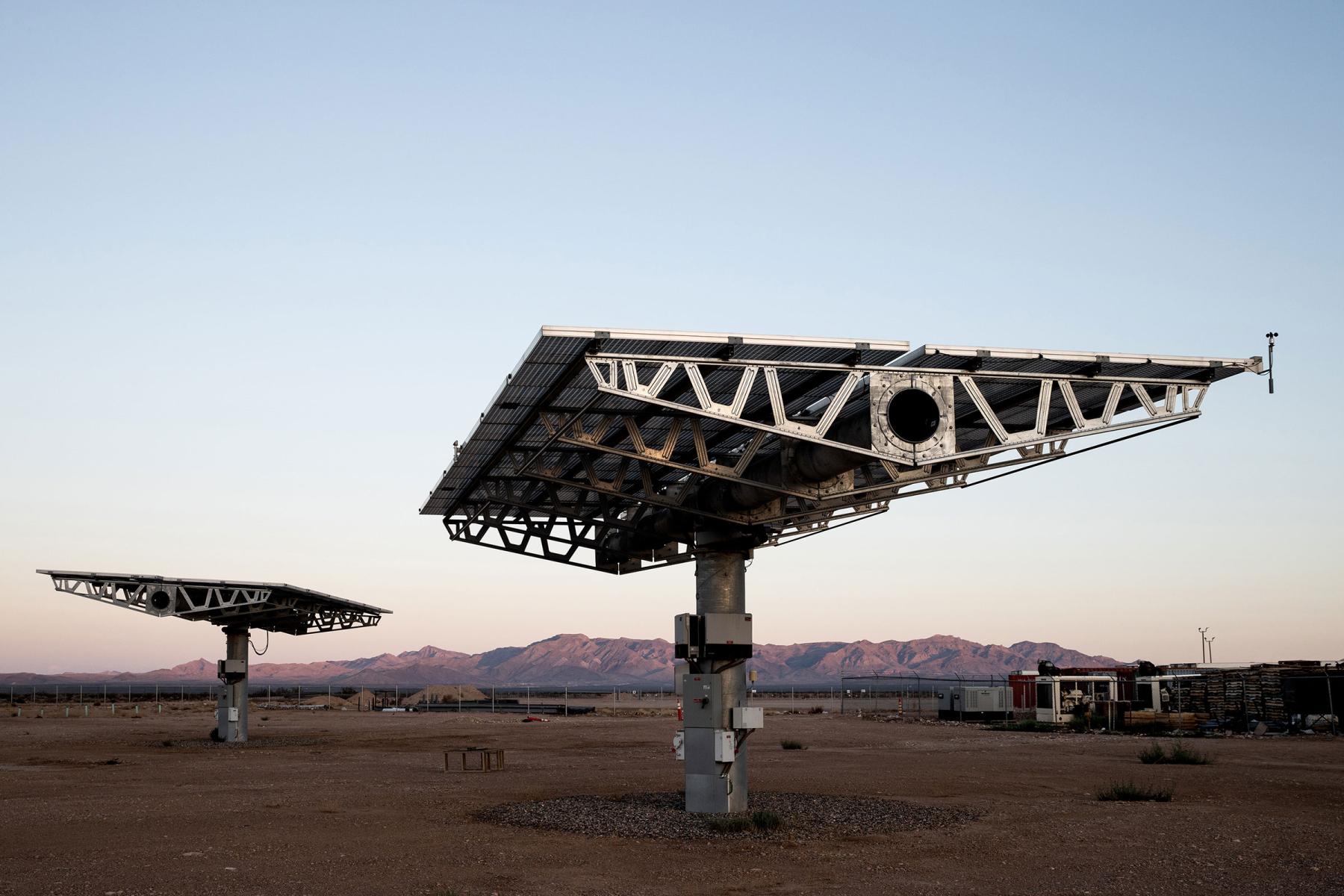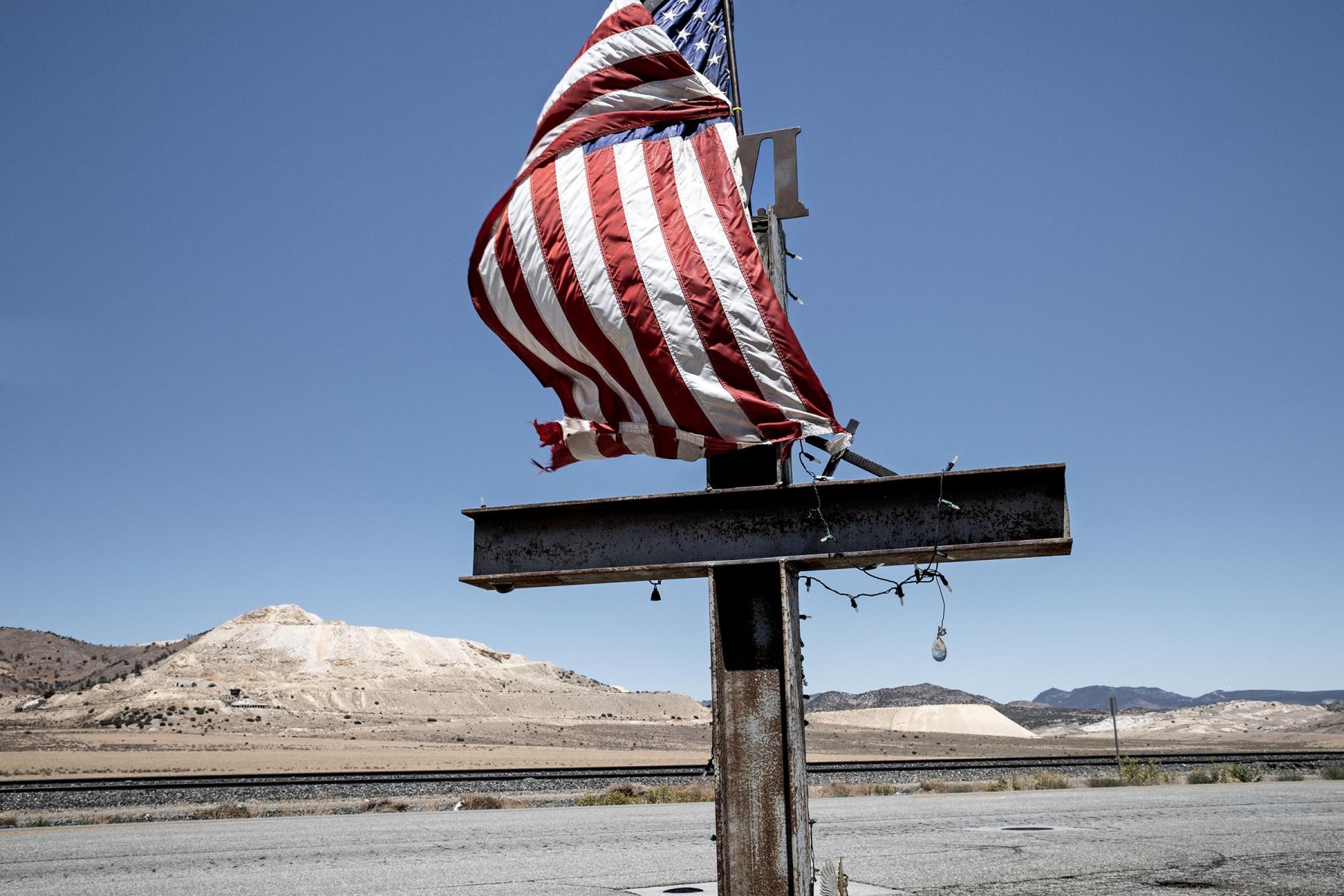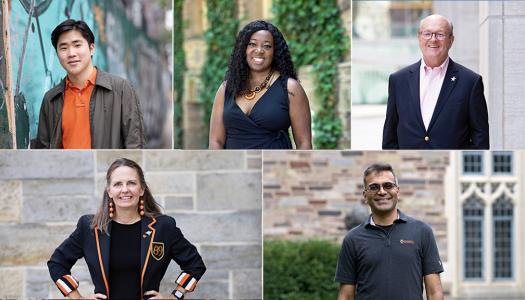Allison Carruth maps imaginative new blueprints for the future of the planet
Annual Giving helps bring the world’s top faculty to Princeton
Northwest of Denver, there’s a stretch of U.S. Highway 40 called Rabbit Ears Pass that cuts through the Rocky Mountains. It’s named for the prominent Leporidae-shaped igneous rock formations that stand prominently atop a nearby peak, and the volcanic geology of the area began millions of years before the state of Colorado and the U.S. Forest Service blazed the high-mountain road through the range.
For Princeton faculty member Allison Carruth, the pass encapsulates the experiences and ideas of wilderness that defined her childhood. Her parents, avid mountaineers, taught her to ski on nearby slopes, which then burst with wildflowers in the summer months. Her family camped with her grandparents in Steamboat Springs, where her grandfather fly-fished; and they frequently drove over Rabbit Ears Pass, from the mountains to the high desert, to visit relatives in Wyoming. The route wasn’t just a state landmark; it represented a mythology of nature in the American West that also shaped family relationships. “I have such strong memories of snow-capped peaks in winter and wildflower blooms in summer,” Carruth said, “and coming up over a pass like that was incredibly romantic.”
Last August, Carruth drove from California to Princeton to relocate with her husband, Barron Bixler, an environmental documentary photographer who holds an appointment as art and media specialist at the University. On their journey, she crossed over Rabbit Ears Pass for the first time in years. What greeted her, however, was a visceral experience of ecological precarity. The beauty she remembered was literally obscured by dark clouds — smoke from the wildfires that were choking the West from Southern California to the Canadian border — and the bouquet of bright colors she associated with the pass seemed to be painted with ash. “There were so many fewer wildflowers than I remembered,” Carruth said. “Pausing at the summit of Rabbit Ears Pass, witnessing the effects of wildfire and bark beetle infestation, I realized that the forest was incredibly ill. It was haunting.”

The experience lingered with Carruth for the rest of the journey, underscoring how cherished places from childhood like Rabbit Ears Pass have been stressed to a breaking point — stresses amplified by climate change. A scholar of contemporary American culture and the cultural dimensions of current environmental challenges, Carruth arrived at Princeton a few weeks later to launch the Environmental Art + Media Lab, an innovative interdisciplinary center that conducts applied research and develops collaborative projects at the nexus of imagination and science.
“The lab aims to incubate experiments in imagining environmental histories and futures that connect art and science and envision livable futures,” said Carruth, who is jointly appointed to Princeton’s High Meadows Environmental Institute and the Effron Center for the Study of America. “How do we build a hub to bring environmental storytelling, environmental science and environmental action together?”
BLAZING A NEW KIND OF TRAIL
Carruth’s path to establishing a media lab dedicated to the environment has been a winding one. In fact, she says, when she began her academic career, the field of environmental humanities that has become central to her work was still emerging. At Stanford University, where she was studying to earn her Ph.D. in American literature and culture, she had proposed a dissertation about a little-known group of experimental 20th century American poets and playwrights when she began to have doubts. “I think I was at a crossroads because I didn’t want my work to feel removed from the problems of the world,” said Carruth, who had taken classes in environmental studies at Grinnell College in Iowa and was active in the California local food movement when she moved to the Bay Area.
Around the same time she was questioning her dissertation topic, she encountered the novels of Ruth Ozeki, a former filmmaker and TV producer who extensively researched industrial agriculture and industrial livestock before publishing her first novel, “My Year of Meats.” “I feel like there was something in those novels that brought a lot of the strands of my own intellectual and social commitments together,” Carruth said. “As I turned my research toward environmental narratives [like Ozeki’s], my work increasingly was defined by the conviction that the realm of the imagination is itself a contributor to research and to knowledge.”
With the support of her dissertation advisor, Carruth shifted her research focus to study how storytellers illuminated the technological developments and political ramifications of industrial agriculture that fueled U.S. power, and helped to imagine alternatives. “Even though it couldn’t have been more far afield from what my advisor most cared about, he gave me the green light,” Carruth said. “It was a leap of faith, that green light to do something unconventional for my disciplinary training in literature.”
Carruth’s shift coincided with the release of Al Gore’s 2006 documentary, “An Inconvenient Truth,” and increased academic attention on environmental topics in the humanities. After completing a postdoctoral fellowship in English at the University of California at Santa Barbara, she became a prominent voice in the environmental humanities while teaching and conducting research at the University of Oregon, Stanford and the University of California at Los Angeles. She published two books — “Global Appetites: American Power and the Literature of Food” and, with Amy L. Tigner, “Literature and Food Studies” — and in 2016, she co-founded the UCLA Laboratory for Environmental Narrative Strategies (LENS). In the fall of 2019, she came to Princeton as the Anschutz Distinguished Fellow and visiting associate professor in American studies and taught a “Creative Ecologies” course.
In January 2021, Carruth was appointed to the Princeton faculty, and in September of that year, Bixler began his appointment in the High Meadows Environmental Institute. “One thing I noticed in 2019 was how vibrant the arts and humanities are at Princeton,” Carruth said. “This is a university that is also committed to interdisciplinary research, teaching and problem solving at a level that I think is rare.”

ON THE ROAD
On Aug. 2, 2021, Carruth, Bixler, and their 9-month-old son set off on a 3,600-mile coast-to-coast trip as they relocated to Princeton. The couple have taken numerous road trips throughout California and the western United States, often for Bixler’s photography projects that explore the impact of environmental crises on land and people. But this trip was different: It was the middle of the pandemic, fires were blazing uncontrollably throughout the West, and American cities were still convulsing in protest following the murder of George Floyd as well as Ahmaud Arbery and Breonna Taylor.
“It was a compressed education in the two things I’m at Princeton to work on: the study of America and the cultural dimensions of our most pressing environmental issues,” Carruth said. “This is a moment of converging crises that amplify one another — COVID, climate change, struggles for racial justice — giving my and others’ work a new urgency.”
For three weeks, they drove east, taking unplanned detours to be more immersed in the places highways cut through. “This was an opportunity to actually slow down and travel from one coast to the other in a deliberate, observant and curious way,” she said.
There were momentous encounters with beautiful landscapes and harrowing sights like at Rabbit Ears Pass, but Carruth also noted “the strange kind of isolation to this journey.” In normal times, a large part of a cross-country roadtrip is the people from various places one meets along the way. But those encounters were limited by the pandemic. “It was muted,” she said. “It was like experiencing the traces of people and their lives indirectly through the landscape.”
In public parks across the country, they stopped to eat their meals. “We’d find these lovely little oases, with ponds and birdlife — places that were gathering places for local communities,” Carruth said. “And it was striking to look up and realize we’re in the shadow of an oil refinery or an interstate highway. It felt vital to be present to these places, to see how different regions are really grappling with climate change.”
NOT THE SAME OLD STORY
In Morrison Hall, Carruth is putting what researchers in her field call environmental imagination under the microscope. The Environmental Art + Media Lab is analyzing predominant methods for communicating about environmental problems to determine how they resonate and for whom. Or how they fall flat and why. Central to the lab’s work is an annual story incubator involving both students and collaborators with experience in specific media, from photography and documentary film to animation and game design. These projects aim to elucidate an environmental problem differently than its most familiar framing within mass media and popular culture. Tackling issues ranging from climate change to regional food and water vulnerabilities to the urban-rural-wildland interface, the lab is focusing on telling site-specific, community-engaged stories that also help to spark change.
“We have two entrenched environmental storytelling modes — data visualization and apocalypse — both of which have limitations and blindspots,” Carruth said. “Neither technical stories nor disaster narratives are reaching, let alone engaging most people.’”

The lab’s first story incubator will coalesce around the theme of coastal futures focused on highly local experiences of flooding in the mid-Atlantic and wildfires on the West Coast. “They will grab the third rail of these climate crises that are affecting the coasts,” Carruth said. “But rather than an apocalyptic narrative, they will offer imaginative blueprints for what futures might look like beyond worst case scenarios — thinking about cautious hope that can actually usher in a real future.”
A media of particular interest for the lab is audio storytelling. “There’s research around how the brain processes different forms of storytelling through different senses,” Carruth said. “In the visually-saturated worlds of social media and streaming platforms, listening offers a potentially powerful sense through which to connect, to learn, to imagine.”
As its facilities are built out, the lab will also serve as “a kind of media lending library,” where students, faculty and outside collaborators can experiment with various technologies and genres and develop different types of multimedia productions. “The core of the lab is a multidisciplinary team that already includes graduate students from geoscience and English and a summer internship team of undergraduates from across campus,” Carruth said. “Ultimately, I hope the lab will also have an advisory group — a kind of brain trust — who bring together expertise from documentary storytelling, science communication and immersive media.”
Students will be central to the lab’s ultimate impact. The current generation of young adults, Carruth noted, brings a great sense of urgency to the climate crisis and enthusiasm for creative work that can help bring about a paradigm shift in environmental communications.
“Over the last several years, I have noticed more and more students who bring into my classes and collaborations these incredible toolkits for creativity, for citizen science, for environmental entrepreneurship, and for activism and leadership,” Carruth said. “They are creating transdisciplinary knowledge and roadmaps for the future.
“I am really excited to help train and equip students to be environmental changemakers — whatever fields they go into. They give me hope. And they keep me going through the work I’m doing.”




